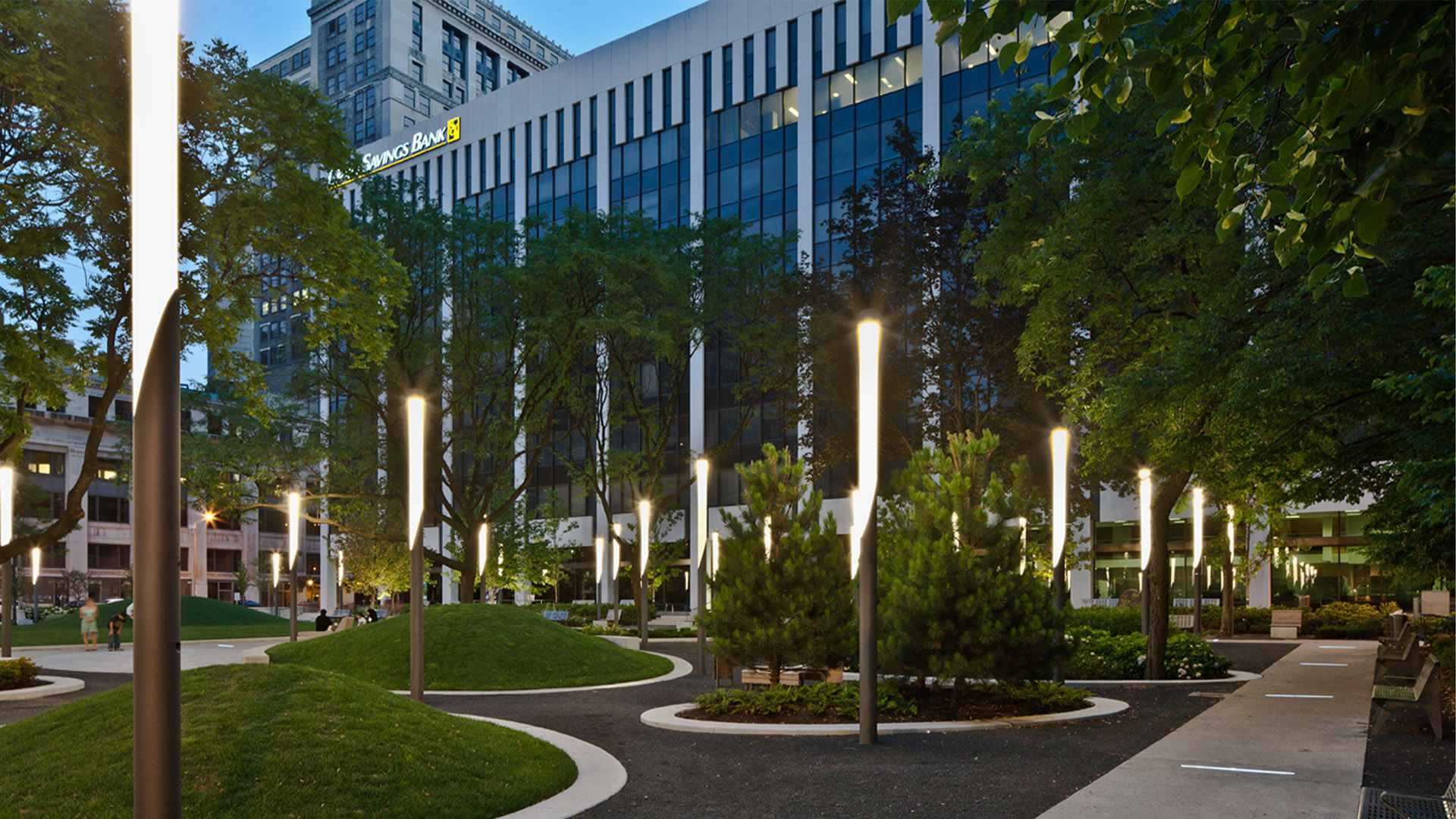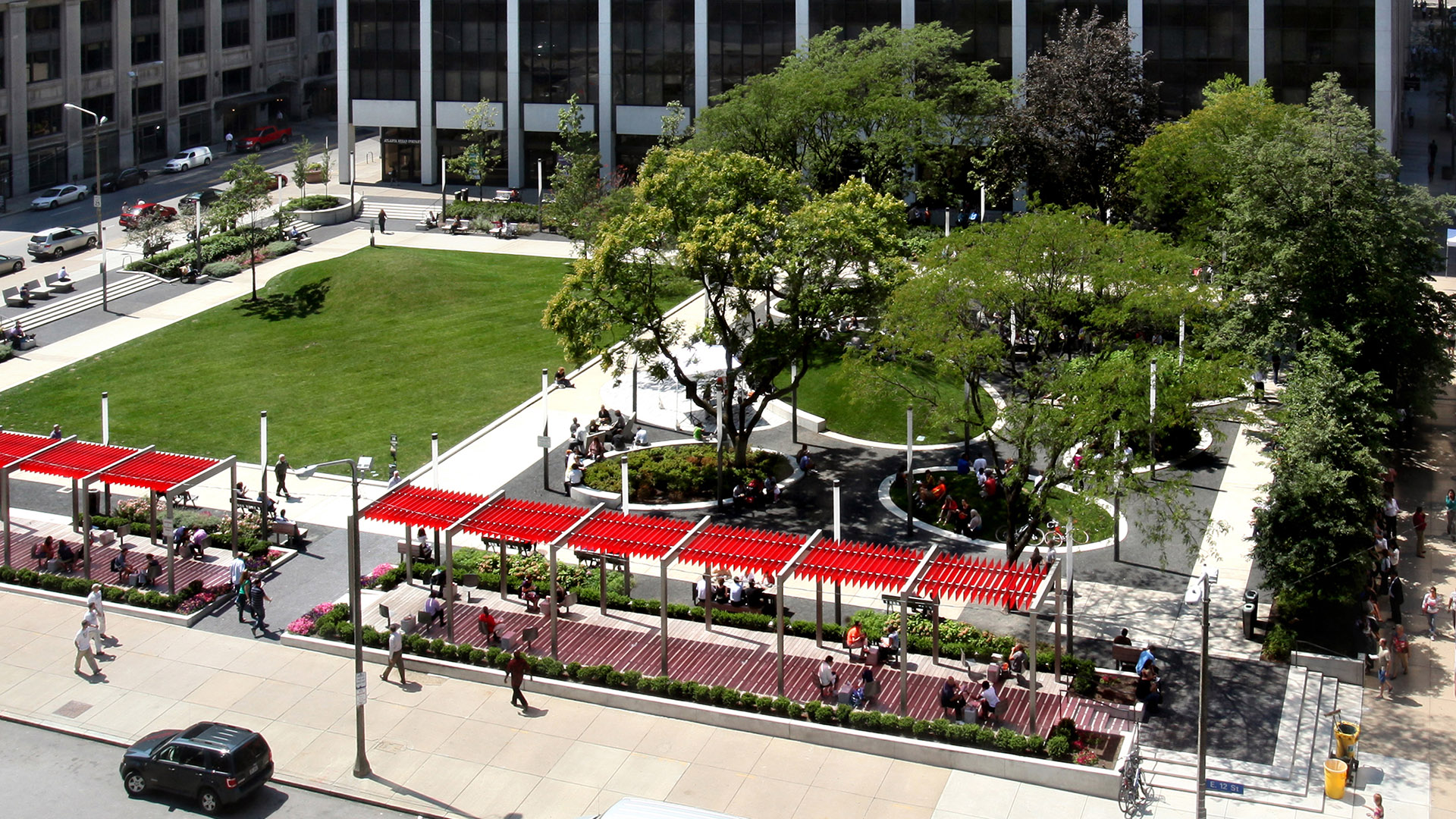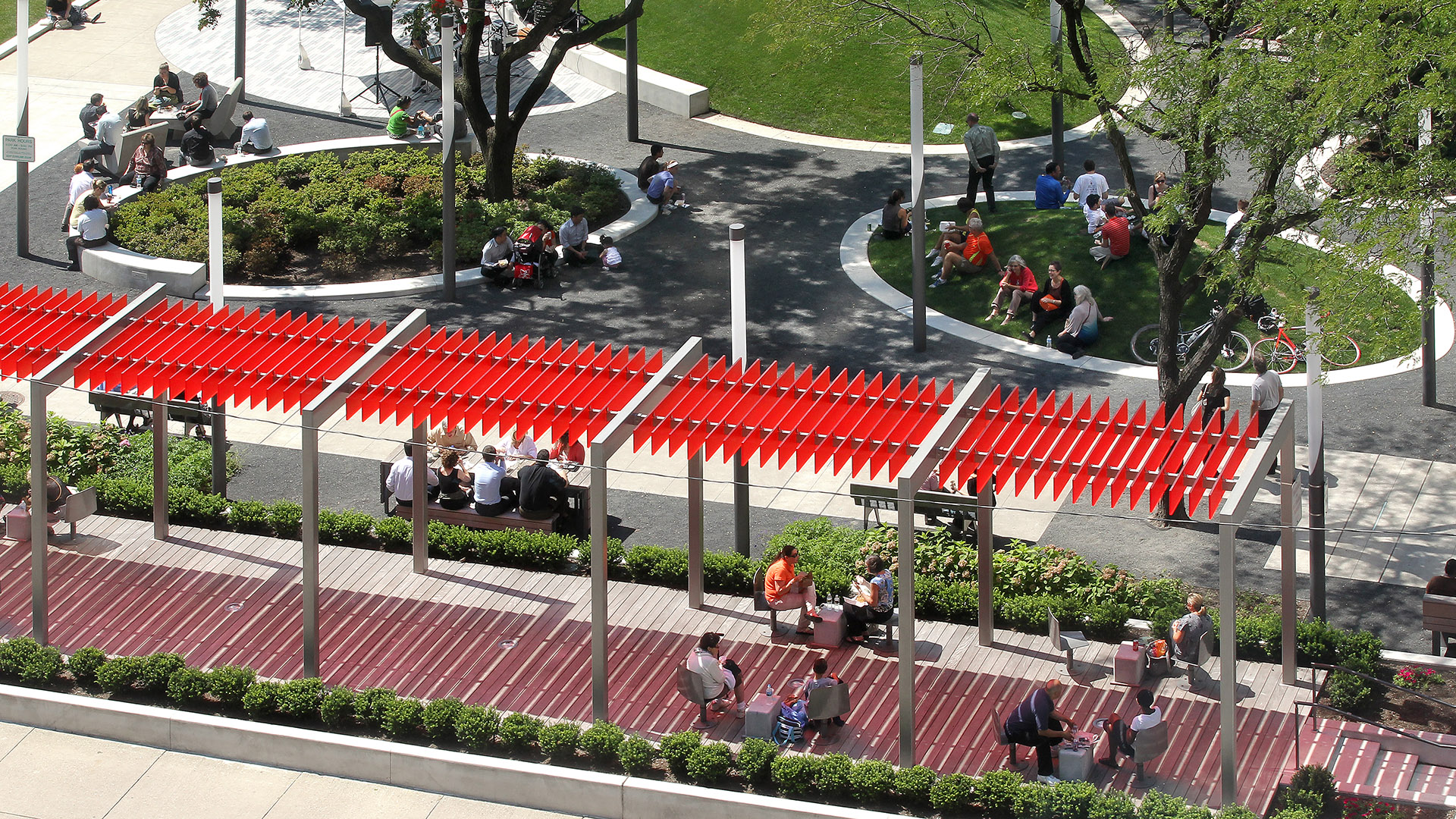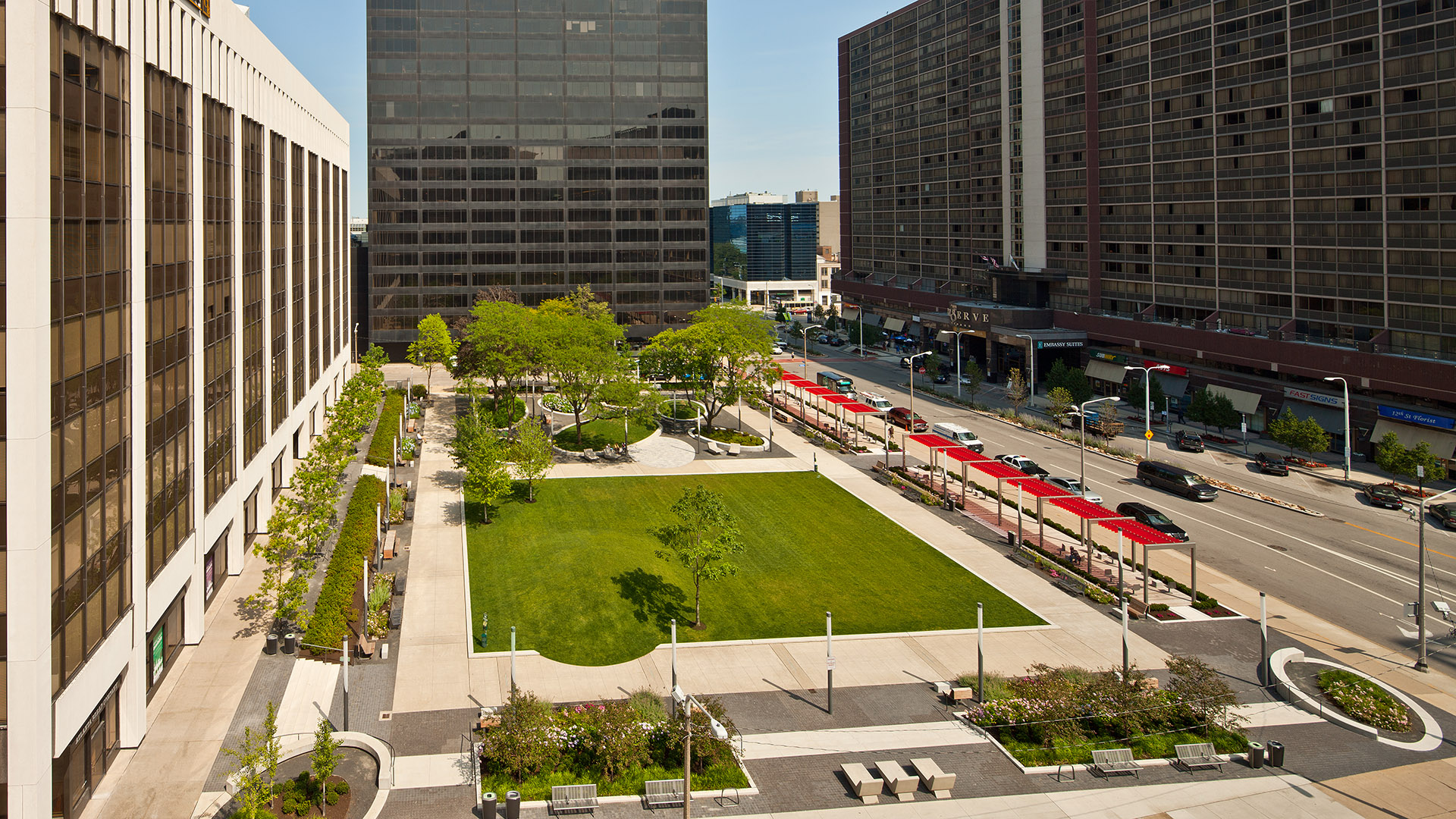Originally completed in 1972, Perk Park is a vestige of IM Pei’s urban renewal plan. It was built in an era when the street was seen as a menace so parks turned inward. Rolling berms around the edges and sunken areas in the middle, filled with concrete retaining walls, reflected that era. Not surprisingly, the park fell into decline; abandoned by the neighborhood and occupied for less desirable purposes.
After years in this condition, the City and Park Works committed public and donor funding toward the park’s redesign and rejuvenation. Thomas Balsley Associates’ plan to reunite the community with its park is strong, simple, and logical. The “forest and meadow” concept preserves the park’s strong points — the mature shade trees and the liminal mounds — but replaces the central sink hole with a wide, sunny lawn on which daily urban life will unfold in its magical myriad of ways.
On the north side, intimate seating areas are created among a grove of large, existing honey locusts which cast dappled shade on a forest floor of crushed stone. The oval mounds provide topographic relief, their gentle swellings in contrast with a geometric grid of 20-foot tall light wands which echo the rhythm of the surrounding architecture space while providing night-time drama. A corner food kiosk and trellised cafe terraces activate the park. Perimeter garden beds and distinctive seating flank the perimeter path whose embedded light strips echo the park’s cadence. The lawn’s formality has been interrupted by a large oval mound on which children play and adults view daily impromptu city life and staged performances. Clear lines of sight replace the huddled bunkers. Choices that range between sanctuary and urban social interaction abound.
Perk Park embodies the untapped potential of small urban public spaces in our cities. A public waste ground has been transformed into a common ground, a source of pride and enjoyment for its neighborhood and Cleveland citizens. It serves as an example of a collective civic will’s vision and fortitude, and the power of design.
Bensonhurst Park
Bensonhurst Park is part of the larger Shore Parkway, an 816.1-acre collection of parks that stretches across Brooklyn and Queens. Today, the site provides a series of pathways, passive seating areas, recreational fields and a playground.
SWA/Balsley created a master plan for the redesign of the north end of the park and final design and construction do...
Ferry Point Waterfront Park
Since the closing of a city-owned landfill in 1963, the site’s transformation into Ferry Point Waterfront Park has been a long, complex process. The new Ferry Point Waterfront Park will be a long linear eastern ecological extension of the previously built and conventionally programmed western Ferry Point Park. Part of a Jack Nicklaus-designed golf course, this...
Leeum Samsung Museum of Art
From its mountainside perch overlooking Seoul, the Samsung Museum of Art Complex boasts museums by three of the world’s most sought-after architects: Rem Koolhaas, Jean Nouvel and Mario Botta. Uniting these remarkable yet divergent works of architecture is a space of clean and powerful gestures. This elegant, understated landscape serves as their matrix and mu...
San Jacinto Plaza
The redesign of San Jacinto Plaza, a historic gathering place in El Paso’s downtown business district provides a state-of-the-art urban open space, while protecting and celebrating the history and culture of the site. The project was the result of an intensive community process involving input from a wide range of constituents. Active programming, environmenta...











